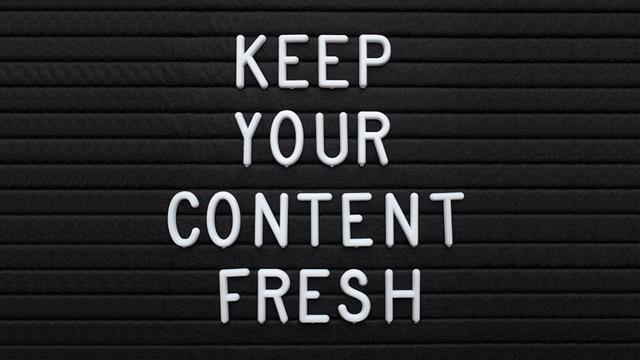How to Write Content That Is Google Optimized and People-Friendly

Quality content or search engine friendly content? Some may find it debatable, but both aspects prove to be equally crucial when it comes to writing for Google and writing for people as well.
Rasshmie Salunkhay
Last Updated: Sep 4, 2020
“Content is the reason search began in the first place.” – Lee Odden
Online content writers and marketers may suggest that it is futile to worry about search engine rankings as quality content will bring the audience to you anyway. Of course the quality of a content matters, but the frequency of publishing the content too has a considerable impact on the search engine rankings. Moreover, Google optimization too has a vital part to play here. Ignoring either of them is going to pull your rankings down and keep targeted traffic away.
Online content writers and marketers may suggest that it is futile to worry about search engine rankings as quality content will bring the audience to you anyway. Of course the quality of a content matters, but the frequency of publishing the content too has a considerable impact on the search engine rankings. Moreover, Google optimization too has a vital part to play here. Ignoring either of them is going to pull your rankings down and keep targeted traffic away.
To stand out from the competition and pull the audience even more effectively, making your content rank higher on SERPs to increase its visibility is must. For this, writing for search engine optimization is highly necessary. And, making your content search-engine-optimized is not difficult as search-engine algorithms are easy to manipulate!
Most of the times, search engine optimization is given preference over the quality and relevance of the content. So, a better solution would be to strike a good balance between the two since both aspects are interdependent. Remember, quality is undoubtedly considered the No.1 ranking factor after Google Panda and Penguin updates.
Most of the times, search engine optimization is given preference over the quality and relevance of the content. So, a better solution would be to strike a good balance between the two since both aspects are interdependent. Remember, quality is undoubtedly considered the No.1 ranking factor after Google Panda and Penguin updates.
Want to know how to write content for readers? Have a look at various attributes of a quality content that is highly engaging for a reader. Check if your content is:
- Updated: No matter how obvious it may sound, keeping your content up-to-date with time and need of the topic is extremely essential! Never forget, a content with the latest and precise information is always an advantage when it comes to search engine results.
- Structured: The headlines should be impactful that help to drive traffic. Several major content sites have usage of numbers in headlines. Curate alluring and actionable titles with proper usage of keywords in a strategic and natural way. Also having a click-worthy and sharable headline won’t hurt. Introduction, sub-headings and conclusion are other crucial aspects of the flow.
- Precise: Give your readers precise information and keep them hooked to your site. 'Helping a reader get more information' has to be the objective of your content. Remember, search engines consider long content to be thorough and so they rank it higher in organic results. But, that does not mean you should go out of the flow and add more content to make it long, and then lose the focus.
- Simplified: Make sure your content is quickly scannable, easy on eyes and the languge is easy-to-understand for a reader. Use callouts, short paragraphs, bullet points, bold text, quotes, numbered lists, etc. to make it reader-friendly. But make sure it is not very basic, not too simple, not too complicated or full of jargon!
- Helpful: Ask yourself if your content is solving the problems of your readers. Check if it gives the right information. Understand your audience and speak to them in their language. There is nothing like giving your readers what they ask for.
- Interactive: An effective content is the one that prompts a user to take an action. Having enticing call-to-action features on the website definitely makes your audiences spend more time on your site. Have a step-by-step plan for them to move forward. Being thorough with your audiences' needs can help you create content that leads them to get results.
Moreover, it is also important to know how to optimize your site for it to rank high:
Google optimization tools: There are ample options to test your site for search engine optimization. You can easily scrutinize your competitors. Review ranking pages for target keywords and compare your content.
Right keywords: Keyword frequency and density is a factor on which the performance of your website depends. Insert your keyword in the title, first paragraph, alt text of your image, or one of your heading tags. Meta descriptions help guide the search engines to your content. So, including exact keywords in the meta description is good. But you can avoid it if they do not flow smoothly with the content.
Organic placement: Let keywords appear organically in the content. When you write about a certain topic, it is obvious that the keywords will be included in the content. Make sure that you don’t over do it.
Google optimization tools: There are ample options to test your site for search engine optimization. You can easily scrutinize your competitors. Review ranking pages for target keywords and compare your content.
Right keywords: Keyword frequency and density is a factor on which the performance of your website depends. Insert your keyword in the title, first paragraph, alt text of your image, or one of your heading tags. Meta descriptions help guide the search engines to your content. So, including exact keywords in the meta description is good. But you can avoid it if they do not flow smoothly with the content.
Organic placement: Let keywords appear organically in the content. When you write about a certain topic, it is obvious that the keywords will be included in the content. Make sure that you don’t over do it.
Social media friendly: Keep the content shareable. Keep the social sharing buttons readily available.
Linking: Linking your website with its other relevant but secondary pages keeps your readers going away from your website. This helps increase readers' time-on-site, and ultimately reduce the bounce rate.
Google's Web Stories: The cutting-edge storytelling format introduced by Google, Web Stories is a new way to make your content search-engine-optimized. Why? ...because Google, the titan of search engines' world, gives precedence to Web Stories and ranks them higher in the search results as they are supported by Accelerated Mobile Pages (AMP) technology.
Linking: Linking your website with its other relevant but secondary pages keeps your readers going away from your website. This helps increase readers' time-on-site, and ultimately reduce the bounce rate.
Google's Web Stories: The cutting-edge storytelling format introduced by Google, Web Stories is a new way to make your content search-engine-optimized. Why? ...because Google, the titan of search engines' world, gives precedence to Web Stories and ranks them higher in the search results as they are supported by Accelerated Mobile Pages (AMP) technology.
If you want to add Web Stories feature to your website, Web Story Builder is the tool for you! Offered by Visual Stories, a platform for the content creators, marketers and businesses; this user-friendly, professional Story creation tool helps them create the latest, fast loading, mobile-centric and immersive Web Stories without any hassle.



































